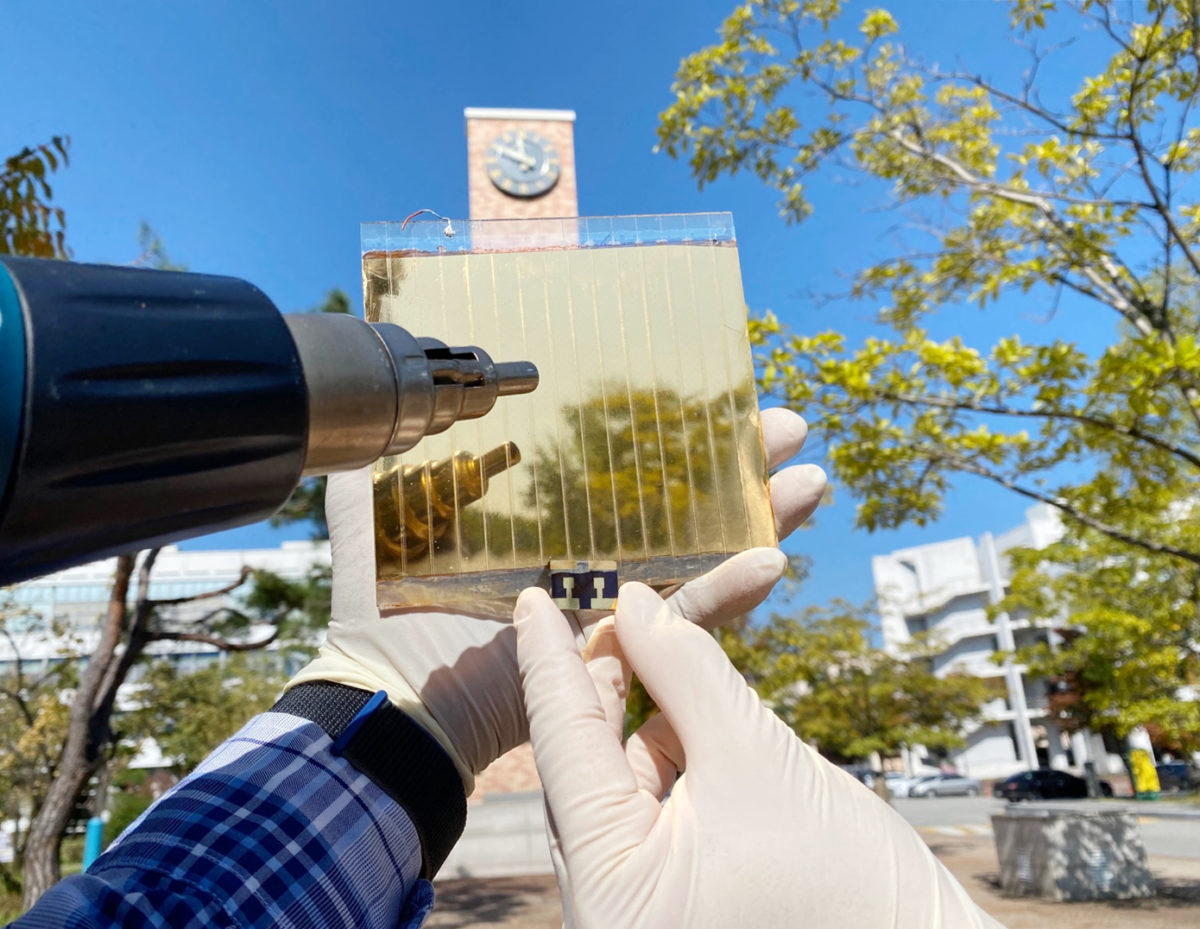All-inorganic perovskites have caught the attention of the PV research community, thanks to higher stability, and potentially even higher efficiency. Initially the materials were thought more difficult to process than their mixed organic/inorganic counterparts. And though the highest efficiency and stability achievements so far still belong to mixed organic/inorganic perovskite combinations, those based on inorganic materials are catching up.
All-inorganic perovskites swap the molecule of hydrogen and carbon (methylammonium or formamidinum) for another material, most commonly cesium. And since the organic components are the first to break down on exposure to moisture and other conditions, replacing them can quickly lead to better stability.
All-inorganic perovskites are typically more difficult to work with, however, and developing techniques to process them at scale will be particularly challenging – and this is one reason most of the industrial development for perovskite continues to focus on mixed organic-inorganic recipes.
Spray coating
Scientists led by Chonnam National University noted that one challenge in producing all-inorganic perovskites comes from the deposition of an electron transport layer (ETL), a process that typically requires high temperatures to deposit tin or titanium based material. The group instead chose to work with zinc oxide for the ETL, and demonstrated a spray coating process to apply a smooth and compact layer, which they describe as “simple and scalable.”
The work is described in full in the paper Ambient processed and stable all-inorganic lead halide perovskite solar cells with efficiencies nearing 20% using a spray coated Zn1−xCsxO electron transport layer, published in Nano Energy. Cells produced by the group incorporating the spray coated ETL achieved stabilized efficiency of 18.63%, independently certified by the Korea Institute of Industrial Technology. And the group was able to scale the material up somewhat, achieving 18.46% on a device measuring 1cm x 1cm.
In both cases, the devices maintained better than 95% of their initial efficiency after 300 hours heated to 80 degrees Celsius. “The impressive device performance originates from the promising optoelectronic properties of the low-temperature processed ETL and doped perovskite absorber layer, enabling suppressed non-radiative recombination and improved carrier management,” the group states in the paper. “We believe that chalcogenide doped all-inorganic perovskites absorber will be an effective approach to improve the stability of the solar-friendly [all-inorganic] perovskite composition.”
This content is protected by copyright and may not be reused. If you want to cooperate with us and would like to reuse some of our content, please contact: editors@pv-magazine.com.




1 comment
By submitting this form you agree to pv magazine using your data for the purposes of publishing your comment.
Your personal data will only be disclosed or otherwise transmitted to third parties for the purposes of spam filtering or if this is necessary for technical maintenance of the website. Any other transfer to third parties will not take place unless this is justified on the basis of applicable data protection regulations or if pv magazine is legally obliged to do so.
You may revoke this consent at any time with effect for the future, in which case your personal data will be deleted immediately. Otherwise, your data will be deleted if pv magazine has processed your request or the purpose of data storage is fulfilled.
Further information on data privacy can be found in our Data Protection Policy.